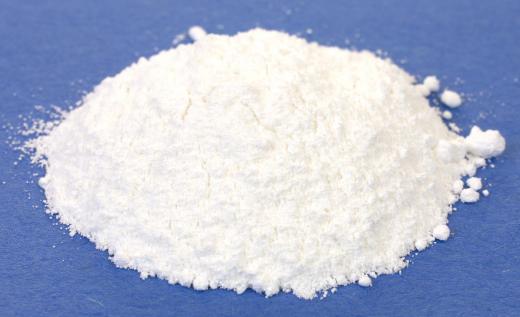What Are the Properties of Sodium?
Sodium is a soft, malleable metallic element that is the sixth most abundant element in nature on Earth, where it is combined in various types of salt compounds from sodium chloride, NaCl, to sodium hydroxide, NaOH. The element was discovered by Sir Humphrey Davy, a noted British chemist, in 1807, and, initially, it was questioned as to whether it was a metal since one of the properties of sodium is that it is less dense than other metals and so soft that it can easily be cut with a knife. Sodium metal is also highly reactive with water, and, when heated in air, will burst into flame, releasing hydrogen gas in an exothermic reaction which can cause explosions in confined environments. Laboratories typically store the pure metal at the bottom of jars of kerosene to prevent it from making contact with liquid water or diffused atmospheric humidity.
The chemical properties of sodium include the fact that it is very reactive with many types of other elements and compounds, including most metal halides, ammonia, and hydrogen. It reacts only weakly with carbon, however, and not at all with nitrogen or inert gasses such as xenon and argon. This makes it a useful component as a vapor in sodium vapor lights, which are high efficiency light sources that do not display a decline in light output as they age. Since one of the properties of sodium is that it has a low melting point of 208° Fahrenheit (98° Celsius) and it is not reactive with steel, it has been used as a liquid coolant for nuclear reactors on submarines. These reactors are known as liquid metal fast reactors (LMFRs), and offer high-power output for their small size, while the sodium coolant eliminates the need for high pressure containment vessels on such ships.

The physical properties of sodium metal classify it in the alkali family of chemical elements that include other lightweight metals such as potassium, lithium, and cesium. These are highly reactive metals that bind freely in nature with other elements, making sodium present in diverse forms that are used widely in medicine and agriculture. While sodium chloride, NaCl, is the second most abundantly dissolved mineral in seawater, sodium carbonate, Na2CO3, is found in limestone and has been the most frequently mined ore by humanity, used since at least 1370 BC in the production of glass. Since one of the major properties of sodium is that it is a light metal that is actually less dense than water, this makes it a useful tracer element that gives off a weak level of radioactive decay in the form of isotopes sodium-22 and sodium-24. These isotopes are used in medical imaging as well as to track leaks in buried pipelines that transport petroleum and other industrial compounds.

Other uses for sodium include its role as an important element of nutrition for humans, animals, and plants. It is also widely used to manufacture organic materials such as soap and sodium hypochlorite, NaOCl, which is a key component of bleach for textiles and paper, as well as being a useful disinfecting agent. Sodium is also used to enhance the qualities of metallic alloys and serves as a good conductor of electricity where it can reduce electric power consumption in neon lighting.
AS FEATURED ON:
AS FEATURED ON:












Discuss this Article
Post your comments